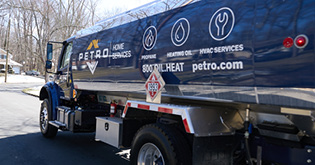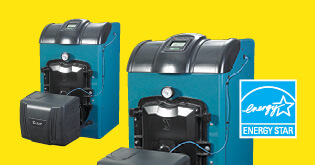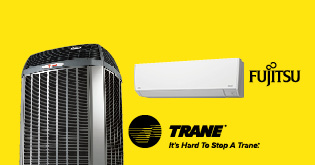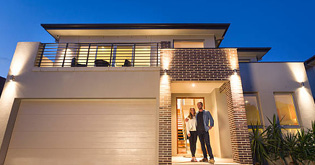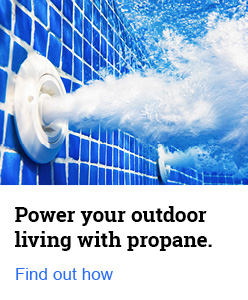- My Account:
- Sign In
- Register
- Make Payment

The 6 best home HVAC systems.
.jpg?sfvrsn=75c3e54_3)
According to the United States Department of Energy, HVAC systems account for approximately 48% of a home’s energy consumption. That said, the type of system you select can make a large difference when it comes to those summer cooling and winter heating bills. Choosing the right one for your home size, construction, and the climate of your area is important. Here are six common types of systems to consider.
6 Types of residential HVAC systems:
1.Standard AC & Furnace Split System
Sometimes referred to as forced air systems, the standard air conditioning and furnace split system is a setup that’s been around for a long time. With this type of system, a blower fan in the furnace pulls in so-called untreated air, heats or cools it, and pushes it back through the ductwork into your home. In most cases, the separate furnace is natural gas powered. Homes that do not have access to natural gas might also have a propane powered unit.
Forced air systems are quite popular in parts of the country with mild climates where there’s no need for central air conditioning. Homeowners in these areas often just have a furnace for winter heating and enjoy naturally cool temperatures through open windows during the summer. Another positive is that most newly installed natural gas furnaces today are over 90% energy efficient, which is good for both your wallet and the environment.
The downside to this type of system is that it requires ductwork and might develop dangerous leaks that can lead to carbon monoxide poisoning. For those with severe allergies, these systems also tend to disperse more dust and pathogens throughout the house and keep the air much drier during the colder months.

2. Standard Heat Pump and Air Handler Split System
The standard heat pump and air handle split system is another popular option. In this setup, the heat pump provides both heating and air conditioning. A compressor circulates refrigerant throughout the system. Cold air is picked up indoors when heating and pushes it outdoors. In the warmer months, the reverse happens to keep the cool air inside your home. An indoor handler with a blower pushes the air through the system and circulates it into the living spaces of your residence for a comfortable climate.
Low equipment and operating costs make standard heat pumps popular in all areas of the country. In addition, they boast lower operating costs than boiler systems and electric or gas furnaces and are usually quite energy efficient.
But, like split systems, they also require ductwork and can spread allergens throughout your home. Additionally, one downside of this type of setup is that they aren’t as efficient when it comes to heating in sub-zero temperatures where other HVAC options might be more appropriate.
3. Boiler with Radiant Heat System & AC
Another option is a boiler with a radiant heat system and an additional air conditioning unit for cooling in the summer. Essentially, a boiler unit heats up water to a very high temperature and pushes that water through special pipes in your flooring to warm up the rooms in your home. There are several types of systems including those that use electric, natural gas, or propane to heat the water. Steam boilers, which have been around for several hundred years, are not as popular today due to safety concerns.
According to experts, radiantly heated air is the most comfortable to have in your home as it is not too dry or too humid. Systems with combi-boilers even use the water for heating to create what’s called domestic hot water—i.e. the water used for showers, laundry, etc. As a bonus, the warmed floors feel great on bare feet on a cold morning.
On the downside, boilers often take more time—up to an hour—to heat your entire home than a standard furnace system. They also require special radiant floor pipes in order to work properly. The initial cost is also considerably higher than a forced air or heat pump system.
This type of system is often found in older homes, and it is usually advisable to replace an aging system with a new one instead of going the forced air route to prevent the added cost of the radiant floor piping.
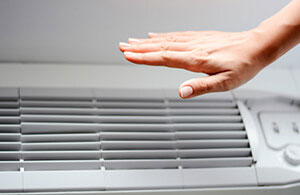
4. Mini-Split Heat Pump System
One more HVAC option to consider is the mini-split heat pump system. It is similar to a standard heat pump system, but instead of having a single unit there are several spread out throughout the home. In most cases, this includes outdoor and hidden indoor units set up in zones. Depending on the size of your home, you might need as few as two units or as many as more than eight.
The mini-split heat pump system is rapidly growing in popularity, thanks to a lowered cost and increasing efficiency. In fact, these units are the second-most energy efficient option for heating and cooling your home next to geothermal technology. As a bonus, no ductwork is required, which makes them a great choice for homes that do not currently have it but still need a reliable HVAC system.
On the downside, the initial setup cost is much higher than a traditional heat pump system and parts can be more difficult to obtain. In addition, certain areas with sub-zero winter temperatures might not be suitable for a mini-split system with the technology available at this time.
5. Geothermal Heat Pump System
Another option is a geothermal heat pump system. This type of system relies on a series of underground pipes to circulate water below ground where it is warmed in the winter and cooled in the summer. This is highly energy efficient, as it uses the natural temperature of the earth’s soil as part of the climate control process.
By far, geothermal systems are the most popular with homeowners concerned about their environmental footprint and those who tend to lean towards green living practices. These are the most energy efficient systems on the market and most last up to twenty-five years before needing serious repair or replacement.
Sadly, there are some downsides. Geothermal heat pump systems are the most expensive for initial installation. This is especially true in situations of existing homes versus new construction, where the ability to add piping is much easier. And due to the specialty nature of the setup, repair costs are also some of the highest. But most homeowners rationalize that the additional cost is reasonable, due to the dramatic increase in yearly heating and cooling costs.
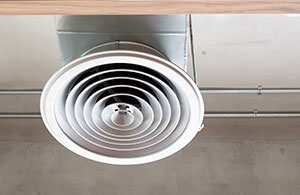
6. Electric Furnace and AC Split System
In some areas, a split system with an electric furnace and an air conditioning unit is most practical. This setup is identical to the forced air system mentioned previously on this page, but it utilizes an electric furnace instead of natural gas or propane powered one.
Essentially, these are large space heaters with attached fans that blow warm air through the ductwork of your home. In climates where very little winter heating is required, this is often the most practical option, especially if the cold season in your area lasts only two or three weeks out of the year. They are also a great choice for vacation or secondary homes that don’t require high amounts of temperature control.
The downside is that these units aren’t nearly as energy efficient as other options on this list. But the lack of use often makes up for any increased heating bills you might face.
Choosing the right home heating and cooling system takes a little bit of knowledge, but it shouldn’t be an overwhelming task. Don’t get lost in the details and do your research. The size and use of your home certainly matter, but cost and energy efficiency are also important.
However, always remember that you aren’t alone in making this important decision. Contact Petro Home Services today to discuss your home heating options, and to schedule an appointment for installation.
Petro Home Services is proud to not only serve communities in DC, CT, MA, MD, NJ, NY, PA, and RI but we also proudly acknowledge the skills and experience of our expert team behind all resources. With insights on topics ranging from heating oil facts to common air conditioning questions, you can rely on Petro Home Services for facts and information to help you understand more about your heating, cooling and home comfort needs. This article and all articles on the Petro Home Services website have been approved by our team of home service experts.

